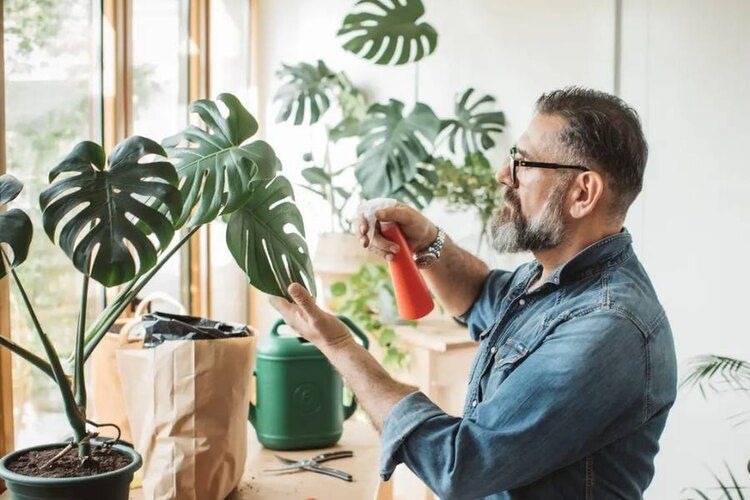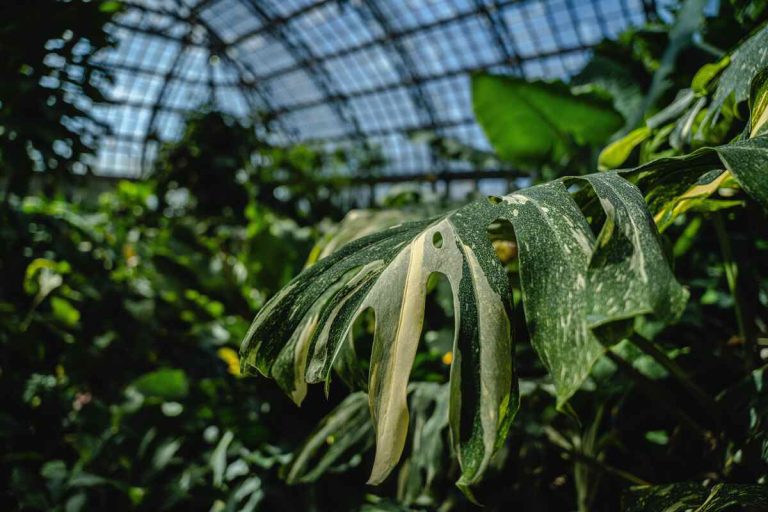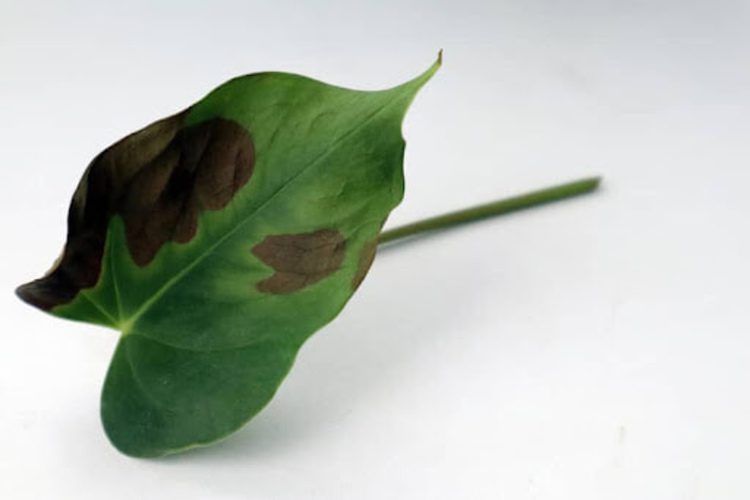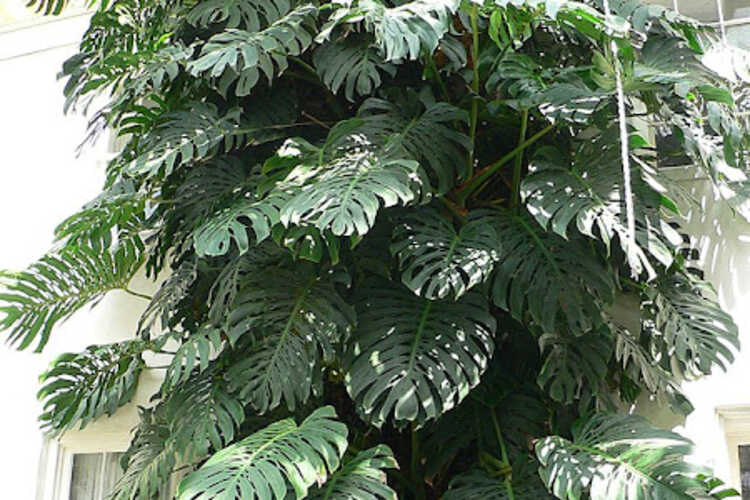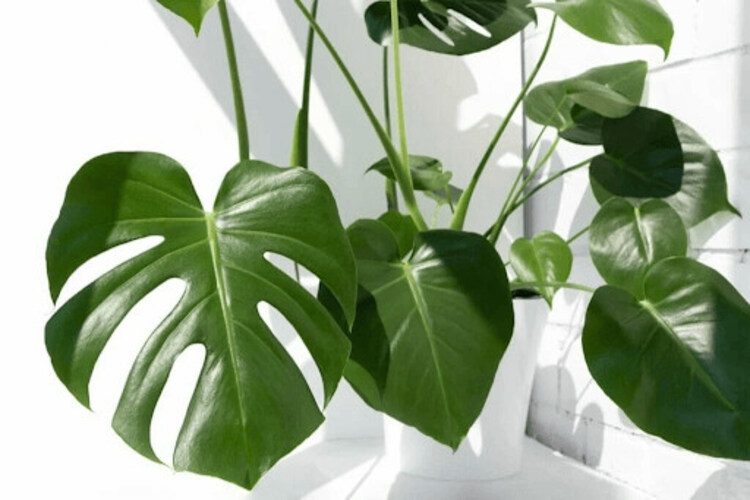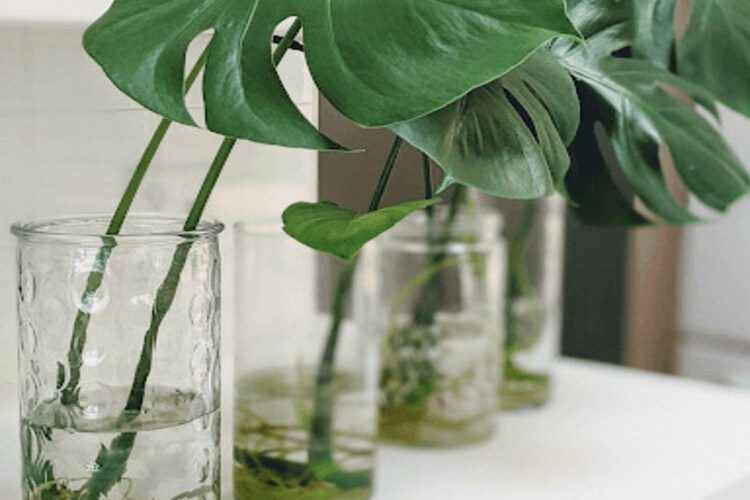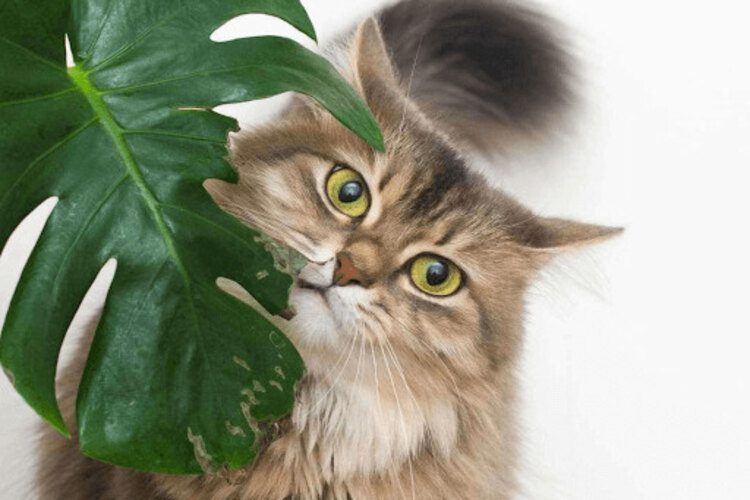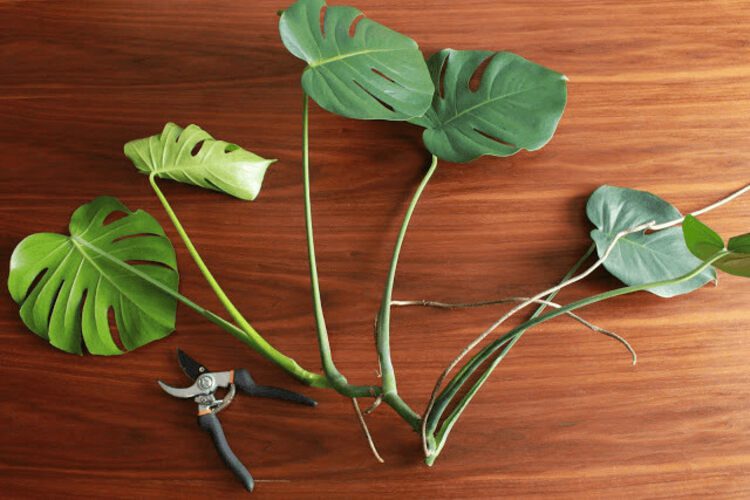Humidity For Monstera: What Is Its Ideal Humidity Level?
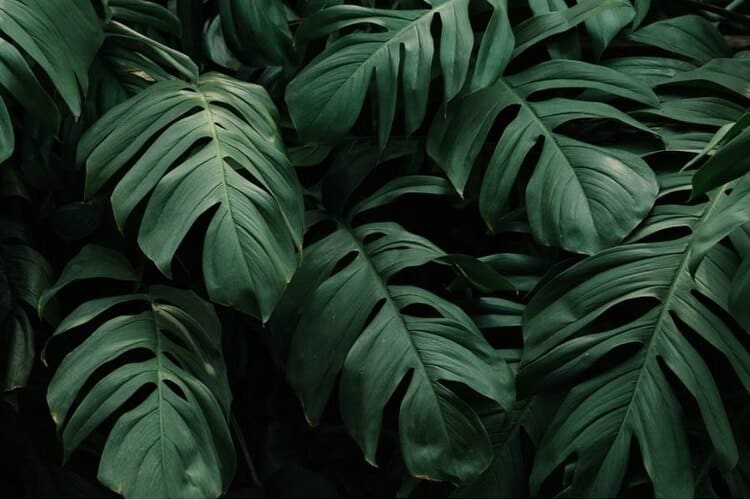
While it may not be as humid as a lush tropical jungle, your house may offer the humidity needed for Monstera to grow. Monstera is suitable for humidity ranging from 40 percent to 60 percent. In some areas, this may not be possible. In some areas, this may not be possible.
For that reason, checking the humidity levels and supplying proper temperature and humidity measures are critical to producing Monstera.
As a result, we need to find a better way to create more humidity so that the plant may grow, and we’ll go over all of the options later in this article.
Humidity For Tropical Monstera
The ideal humidity environment for Monstera plants is in the range of 40% to 60%. Unfortunately, you cannot compare your house to a lush tropical forest. Your home may not have as much humidity as you want.
So, what exactly does Monstera’s humidity level mean? Relative moisture represents the amount of moisture at a given temperature. When moisture reaches 100%, the surrounding air can no longer carry any more water and begins to condense into droplets of liquid. The air temperature is critical because warm air holds more moisture than cold air.
The ambient humidity influences the relative temperature and indoor humidity level. Maintaining moisture in your house might be challenging if you live in a dry and cold climate. Your houseplants may dry out quickly if the moisture level is too low, necessitating more frequent watering to prevent the plant from drying out.
On the other hand, water might condense on your tropical plants if there is too much moisture with limited evaporation. Without adequate ventilation, this can raise the danger of fungus and rot.
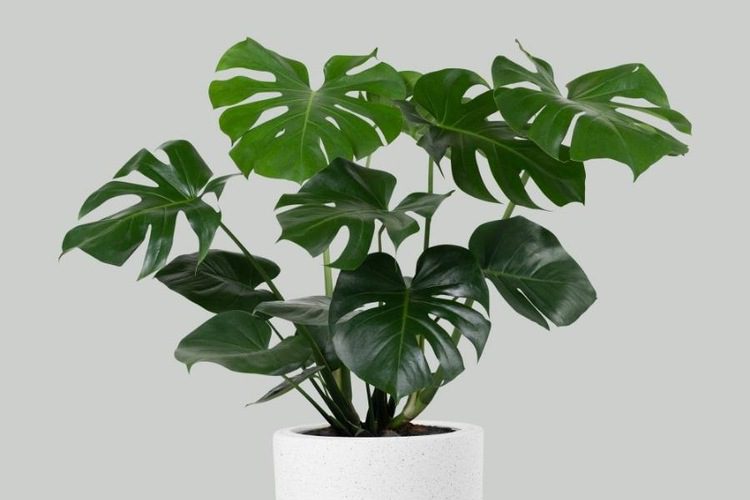
How Does Humidity Affect Monstera Plants?
Monstera is native to tropical climates, where humidity levels are unquestionably higher than what you’ll find at home. As a result, to produce the growth conditions required for this plant to thrive, you must replicate it in its native environment.
Aside from the fact that plants grow best in humid environments, the biggest reason your plant loves moisture is that it aids in the maintenance of appropriate water during photosynthesis. The stomata of Monstera plants will shut if they do not receive enough water. That will prevent the release of carbon dioxide and disrupt photosynthesis as a result.
Fertilizer is also one of the indirect factors that help plants stay healthy. A healthy plant is better able to withstand changes in humidity and temperature. Fertilisation on Monstera also helps produce more leaves. More leaves mean more transpiration, which is the process by which plants release water vapour into the air. This can help increase the humidity around the plant.
Measure Humidity Levels
If you’re not sure if your plant is getting enough moisture, you could check your home’s temperature and humidity levels. Here are several methods for determining your home’s temperature and humidity level:
Using of Hygrometers
The first piece of advice we can provide is to spend ten pounds or so on a hygrometer. It’s pointless to try to adjust the moisture level in your home without first determining your home’s natural moisture level.
It is especially significant since humidity levels vary depending on circumstances, including the season, heating, quantity of plants, and number of people in the space.
If you’re using a wall-mounted hygrometer, choose a suitable location for it. Please place it in the center of the room, covering all areas.
- Allow the meter to calibrate for a few minutes after turning it on.
- Set the meter to moisture and choose the units you want to see.
- Every hour or two, check and note the reading. Make a note of the highest and lowest percentage values you obtain.
You can use a handheld hygrometer or a wall-mounted hygrometer. There is no difference between these two categories regarding their use.
Testing Using Ice Cubes
This approach does not offer moisture measurement or an accurate level. It is nevertheless an excellent means of determining whether your home is damp or dry.
To do ice cube testing, follow these easy steps:
- Make a glass of water with some ice cubes.
- Go to the room or location where your plant is grown.
- Fill the glass with four to five ice cubes and set it on the table inside the room.
- Wait for five to ten minutes.
- Check the glass once the timer has expired. The moisture level is high if too much water is produced outside the glass.
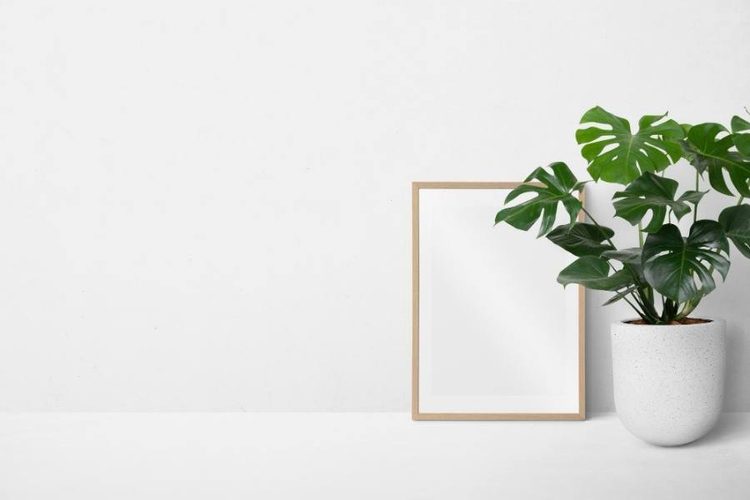
How Do You Make Humidity In Monstera?
Don’t give up just yet if your residence can’t produce the needed humidity level for the plant. You may still attempt several efficient strategies to assist your plant in meeting its moisture requirements. You can increase moisture in your house in a variety of ways.
Humidifier
A humidifier is an effective option for humidifying a whole room! It would require 5 liters of water per day to maintain a relative humidity level of 60% in your living room. It’s quiet, produces a lot of mist, and looks great!
Misting
Because your plant requires high humidity to grow, you might want to try misting. However, we are very opposed to employing this strategy for various reasons. If you live in a humid climate, spraying your plants may result in excessive moisture on the leaves, leading to pathogenic illnesses.
Misting can provide some additional humidity in low-moisture areas, but it may not be sufficient on its own. As a result, to reach the desired moisture level, spray your plants every 15 minutes.
Plants in Groups
The moisture from your tropical Monstera and their growth mediums contributes a tiny quantity of moisture to the local environment. Closely group your plants so that they can share moisture.
Indoor Greenhouse
Keeping a sealed greenhouse, terrarium, or cabinet damp is far simpler than keeping your house humid! It is a beautiful alternative if you live in an arid climate.
Trays for Gravel
It is an excellent way to increase humidity in the house surrounding your plant. Here’s how to go about it:
- Fill a clean tray with gravel or stones at least an inch high.
- Fill the tray with water to at least half the height of the pebbles or gravel.
- Place your pot over the gravel, ensuring it doesn’t touch the water directly.
- Rinse the tray regularly to prevent bacterial development.
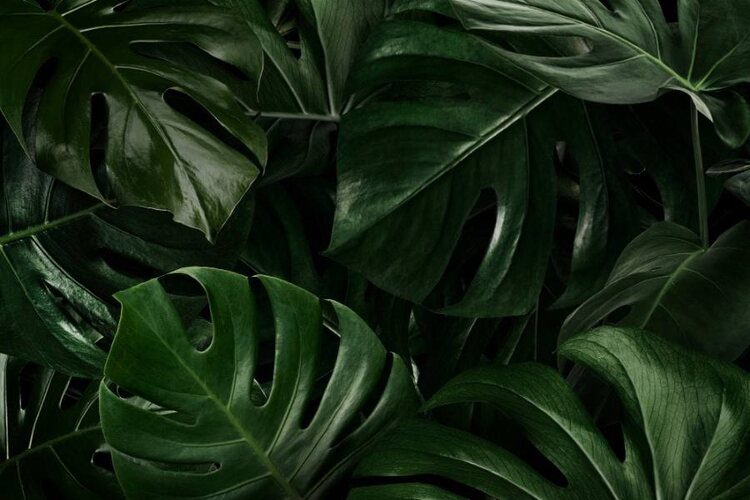
Do Monsteras Like To Be Misted?
You can spray your Monstera plant; however, misting will not assist them in maintaining the moisture level they require. Misting won’t benefit you much if you reside somewhere with less than 40% humidity.
Do Monsteras Like Showers?
The occasional shower helps increase humidity and remove dust and debris from the leaves, promoting healthier growth and photosynthesis.
Mixing potting soil with peat moss and putting it in a container with drainage holes can help maintain the ideal moisture level. You may even put your Monstera plants in the shower with it and let some warm “rain” fall on them now and then.
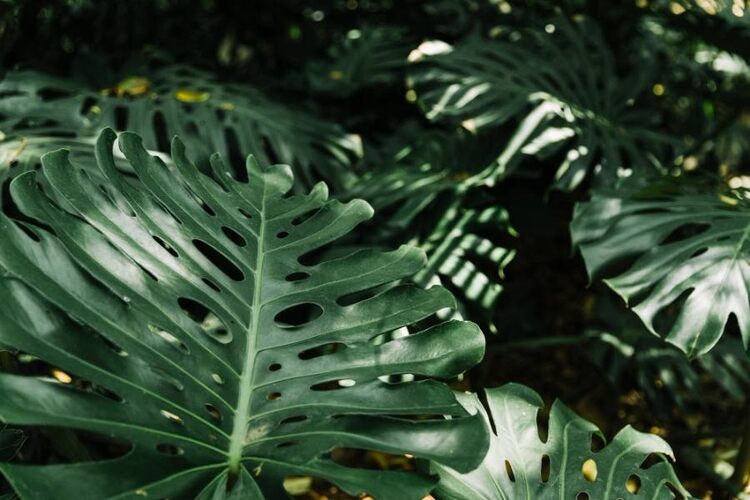
Do Monsteras Do Well In Bathrooms?
Monstera deliciosa is a suitable plant to have in your bathroom because it can tolerate higher humidity levels. Although bright, indirect light is preferable, your plant may still thrive in the shade. It will grow slightly slower and have fewer slits and holes in its leaves.
Do Indoor Plants Increase Humidity?
Because they breathe and photosynthesize, most houseplants increase humidity through transpiration and evaporation, releasing moisture into the air. Later, houseplants release roughly 97 percent of this moisture into the air through transpiration and evaporation. They also produce a more significant amount of water vapour. If you have a lot of other houseplants, the room where you put them will quickly get damp.
To ensure that your indoor plants continue to thrive, it is important to repot them regularly. Repotting allows the plant to grow in a larger pot with more room for its roots to spread. It also gives you the opportunity to refresh the soil and add new nutrients. This will help prevent the roots from becoming too wet and waterlogged.
Why Is Your Monstera Plant Crying?
One of three things might be causing your plant to lose water. It’s most likely due to transpiration, particularly if it’s grown outside, although it might also be guttation in some instances. Some of the reasons the Monstera plant is leaking are as follows:
Guttation
Guttation occurs when excess water is expelled from the Monstera plant’s leaf tips through hydathodes. Hydathodes allow plants to expel excess mineral salts and water from their leaf tips.
Transpiration
Although transpiration helps Monstera plants release surplus water in the form of vapour during the day, transpiration does not occur at night.
Plants develop an inward pressure by taking in more mineral salts and water through their roots. Throughout the day, these tropical plants continue to absorb mineral salts and water. For that reason, you must get rid of any surplus water in the plant’s system. The xylem system pushes mineral salts and excess water through hydathodes on the leaf tips.
Dew
Dew is not the same as a plant’s water through transpiration or guttation. If your plant is in a highly humid environment, water droplets may appear on the leaves, especially at night. Don’t worry! Dew droplets on Monstera leaves are a natural occurrence in highly humid environments and do not harm the plant.
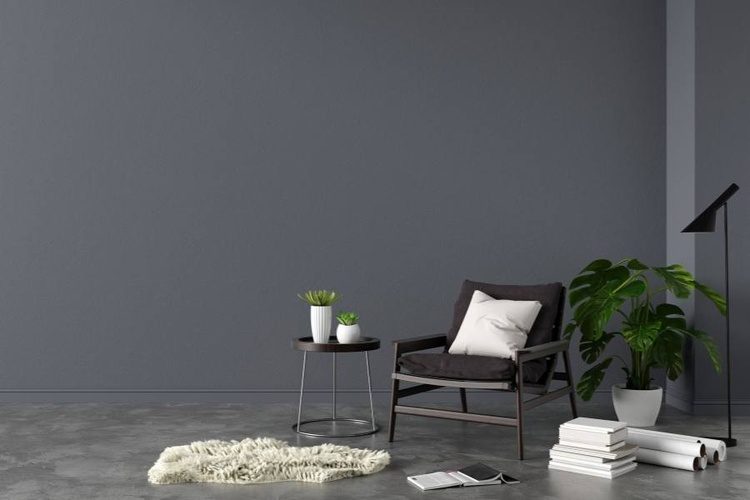
Conclusion
To summarise, Monstera prefers to live in a warm and humid environment. To keep it in its optimal range, you must set restrictions. Here are some things to keep in mind when it comes to the moisture level of Monstera. Make sure that the moisture level does not go below 40%. To correctly monitor the humidity level of the room, use a hygrometer.
You can attempt some of the suggestions mentioned above to increase humidity in your room. In the long term, it will undoubtedly make a difference. If you want to gather further information about gardening tips, check out our site to see more valuable details!
FAQs
Related posts:


